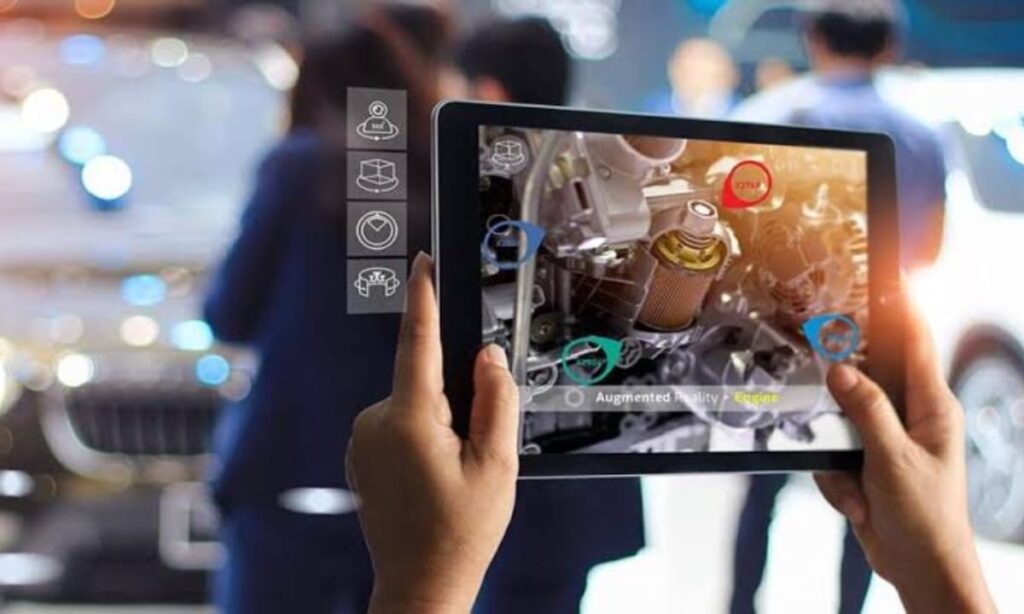Picture walking down a busy street in New York City and instantly seeing live transit updates, restaurant ratings, or even immersive ads floating right in front of you—no phone in hand, no searching required. That’s the kind of future the Augmented World Expo (AWE) 2025 brought to life in Long Beach, California.
This year’s event proved one thing loud and clear: XR (Extended Reality) and AR (Augmented Reality) have moved beyond hype—they’re here to reshape everyday life in America. From cutting-edge AR glasses to industrial-grade XR wearables, AWE 2025 showcased innovations ready for real-world U.S. adoption, and the buzz on the show floor was electric.
The Event That Defines the Future of Reality

If CES is where consumer tech dreams debut, then AWE USA 2025 is where the future of reality itself gets rewritten. Held in Long Beach, California, this year’s Augmented World Expo wasn’t just a showcase—it was a statement: XR (Extended Reality) and AR (Augmented Reality) are no longer niche; they’re mainstream, and America is ready.
From sleek AR glasses that feel like a natural extension of your smartphone to full-blown XR environments that could transform how U.S. industries operate, the show floor was buzzing with possibility. Let’s break down the innovations that stole the spotlight.
AI Meets AR: Glasses That Think for You
One of the biggest crowd-pleasers came from XREAL, which unveiled its latest AR glasses running on a custom Android platform. Unlike older models that simply projected a display in your field of view, these new glasses integrate on-device AI to understand context—whether you’re navigating city streets, shopping, or gaming.
For U.S. commuters, imagine glancing at a building and instantly seeing public transit updates or restaurant reviews hovering in your vision. No phone pulling, no typing—just instant, context-aware data.
Qualcomm’s AR Chip: The Powerhouse Behind the Scenes

Hardware innovation is just as critical as flashy demos, and Qualcomm proved it with its latest Snapdragon AR2 Gen 2 chip. Built specifically for AR wearables, it promises faster processing, longer battery life, and enhanced AI inference—key for all-day, mobile-first experiences.
In an American market where consumers expect sleek, lightweight devices, this chip could be the tipping point that turns AR glasses into an everyday accessory, much like wireless earbuds did a few years ago.
XR Wearables: From Gaming to Workforce Training
Gaming fans flocked to booths showing full-body XR suits, offering unmatched immersion for VR titles. But the real surprise? The industrial applications. Several U.S. companies demonstrated how XR wearables could be used for remote equipment training, safety drills, and design prototyping—all without physical risk or material waste.
Given that the U.S. workforce spends billions annually on training, XR adoption here could mean major cost savings and productivity boosts.
Smart Rings and Controllers: Interaction Redefined
Not all the innovation was head-mounted. Smart rings that let you control AR interfaces with subtle gestures drew big crowds. Think of them as the AR version of a wireless mouse—compact, intuitive, and perfect for situations where holding a controller isn’t practical.
These accessories could be a game-changer for AR shopping apps in the U.S., where consumers already embrace touch-free, mobile-driven buying experiences.
Why AWE 2025 Matters for U.S. Consumers
What sets this year apart is the clear pivot toward real-world, ready-to-ship products. U.S. retailers, logistics companies, and healthcare providers are already running pilots with this tech—not as a marketing stunt, but as part of genuine digital transformation strategies.
With Statista projecting the U.S. AR/VR market to hit $50+ billion by 2027, the innovations seen at AWE 2025 aren’t just “cool demos”—they’re glimpses of tools you might be using in the next couple of years.
The Road Ahead
The U.S. is primed for XR and AR adoption. The hardware is lighter, the AI smarter, and the use cases more compelling than ever. If you’ve been waiting for the “right time” to explore these technologies—whether as a consumer or a business owner—that time may be now.
Final Thoughts
AWE 2025 wasn’t just about flashy gadgets—it was about showing how XR and AR are ready to seamlessly blend into daily American life. Whether it’s navigating your city hands-free, leveling up your gaming setup, or transforming how your team learns and works, the future is looking sharper, smarter, and more immersive.
Stay tuned—because reality as we know it is about to get an upgrade.
Disclaimer
This article is intended for informational purposes only. Product features, specifications, and release timelines mentioned are based on announcements and demonstrations at AWE USA 2025 and may be subject to change. Readers should verify details with official company sources before making purchasing or investment decisions. The author and publisher bear no responsibility for any losses, damages, or consequences resulting from reliance on this content. The author and publisher are not affiliated with or endorsed by any companies mentioned.
